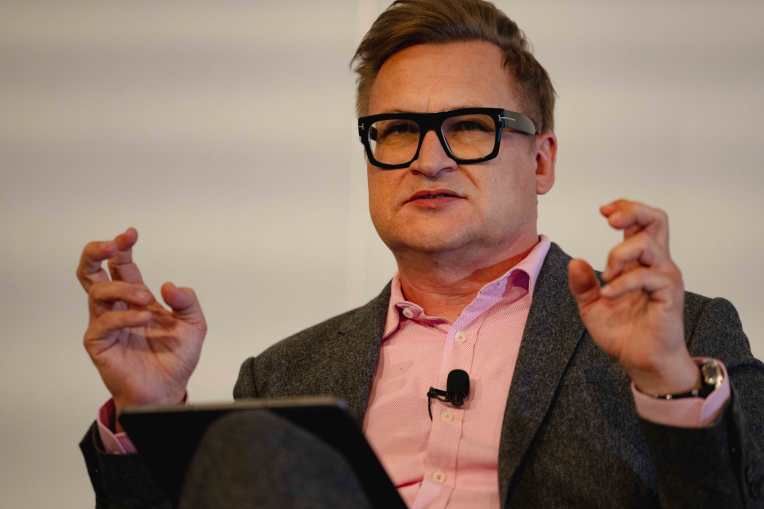With two certainties in life - death and taxes this is a story for our times: AI allows dead woman to answer questions at her funeral.
France uses AI to find hidden swimming pools and then tax them
“Computers never get tired,” says Marek Rucinski, ATO deputy commissioner and head of data and analytics. Olive + Maeve
Meet ANGIE, the ATO’s secret weapon to beat wealthy tax cheats

The Australian Tax Office is using a new Netflix-like artificial intelligence tool to identify suspicious activity within the complicated affairs of wealthy individuals and companies.
ANGIE (Automated Network & Grouping Identification Engine) creates maps of corporate entities and related transactions across time. It can identify connections and relationships and “patterns of interest” for revenue authorities to investigate.
The technology is similar to that used by Netflix to make recommendations based on patterns of usage. Google uses similar database technology to rank its search returns based on relevance, and LinkedIn also applies a similar artificial intelligence model to find networks of people based on common linkages, such as schools.
“The computers never get tired, they just keep going and keep cycling through creating probabilistic links in the network,” ATO deputy commissioner Marek Rucinski told The Australian Financial Review. “They create those network charts and present them to the human analysts for further analysis.
“It really is around bringing transparency to corporate transactions and structures that are sometimes extremely complex,” Mr Rucinski said.
“AI allows us to cut through the fog of data, so humans can make better judgment calls.”
Mr Rucinski said by layering different data sets progressively, the ATO can create clear and new connections in the [corporate] network.
“Imagine millions of interactions that are coming from multiple dimensions. It is very hard for a human mind to internalise that and try to draw all those lines, how an ownership interacts with the previous ownership, and where the indirect ownership paths lead.”
Mr Rucinski came from consulting firm Accenture in 2018 to lead Smarter Data, the ATO’s data and analytics capability.
ANGIE has been running in a “beta” testing phase for the last six months, and has now been put to use more broadly.
Humans typically struggle to see patterns in complex high-frequency transactions among multiple seemingly unconnected entities. But computers using graph databases can be trained to identify networks and infer relationships and suspicious transactions.
ANGIE provides an easy to comprehend visualisation, which ATO staff then use to investigation the integrity of corporate structures or transactions.
The ATO is one of the leading Commonwealth agencies in its use of artificial intelligence and machine learning to expose fraud and detect practices that avoid tax. ANGIE is among around 150 machine-learning and deep-learning models the ATO is now using to identify “risk to revenue”.
The ATO recently busted a major GST fraud ring, saving over $2 billion in lost revenue using advanced analytical tools that found patterns of suspicious behaviour among false businesses claiming GST.
AI is also being used to “nudge” taxpayers – such as send a query – when their deduction claims are inconsistent with claims from similar taxpayers. The smart tools are helping analyse expense receipts from taxpayers claiming work-related deductions, helping ATO staff to focus on higher-risk claims.
ANGIE has been under development since 2019, and came after consulting firm McKinsey helped to develop the proof of concept using graph database technology to aid the tax office’s high-complexity compliance work.
Sydney based Intech Solutions won the contract to deploy its TigerGraph software. The software is optimised for investigations, compliance and financial fraud detection.
A graph database visualises complex networks by storing data about entities (nodes) and their relationships (edges). Graph database technologies scale much better than traditional relationship database approaches, and the learning engines are continuously updating and inferring connections.
“Some of the most complex corporate structures obviously are global in nature, with hundreds of thousands of entities,” Mr Rucinski, said.
“We get access to corporate transactional data from a lot of our international partners – for example, via the country-by-country reports. We combine it with all of our datasets simultaneously, to create an initial database with about 2 billion nodes and 4 billion edges.”
“That creates a very interesting picture for our staff. Because each transaction is time stamped, we’re able to create what we call a time slider.
“So we can visually see how the network changes over time and how the transactions potentially can impact the tax structures as well.
“That is a game changer because suddenly, everything becomes visible.”
Mr Rucinski said the ATO had always been a data-rich organisation, but a new generation of intelligent software was enabling better use of the data.
“Our ability to ingest, curate and catalogue the data at an industrial scale and speed is going to be essential, because otherwise we are creating a warehouse full of stuff that we cannot use downstream.”
“Increasingly, an organisation’s ability to use the data they collect is the edge, and AI algorithms are becoming relatively commercialised and standardised – you can get them off the shelf.”
The deployment of ANGIE has been overseen by a strict ethics regime, to ensure the tool is used for its purpose and to always have a human as the decision maker.
The industry department has also published a framework for ensuring the ethical deployment of artificial intelligence applications.
ATO flags imminent midrange, hyperconverged outsourcing tenders


